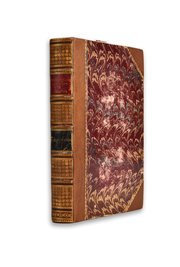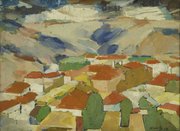
Nasrid Mosaic Tile Panel
Museum of Islamic Art
- Title:
- Nasrid Mosaic Tile Panel
- Production place:
- Spain
- Date:
- 1300 - 1400
- Period:
- Nasrid
- Title:
- Nasrid Mosaic Tile Panel
- Production place:
- Spain
- Date:
- 1300 - 1400
- Period:
- Nasrid
- Material:
- Earthenware, Glaze
- Technique:
- Mosaic, Glazing, Cutting, Assembling
- Dimensions:
- 150.0 × 45.0 cm
This tile panel was certainly once part of the architectural decoration of the Alhambra palace in Granada, built in the 7th century AH/13th century CE by the Nasrid emir Muhammad I (r. 595 – 671 AH/ 1195 – 1273 CE). The palace ornaments are composed of moulded stucco, carved stone and woodwork, as well as multicoloured mosaic tiles, which would decorate the dado or lower registers of the walls. The tiles combine a series of repeated motifs, either eight-pointed stars, tessellated patterns, or latticework and strapwork, or, as this example shows, series of repeated arrows. The technique of alicatado was developed by Muslim craftsmen and imitates the Greco-Roman and Byzantine mosaic technique, which would consist in cutting pieces of cutting pieces of monochrome glazed ceramic using nippers to obtain fragments of various dimensions and geometric shapes (tesserae), which are then placed like a puzzle next to each other according to a previously drawn design. This piece reflects the level of perfection achieved in Nasrid art, whose ornamental and decorative models obey artistic principles based on geometry.



